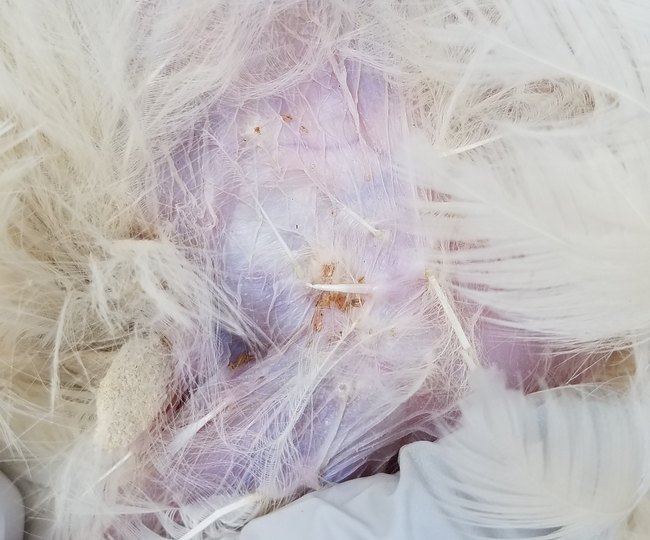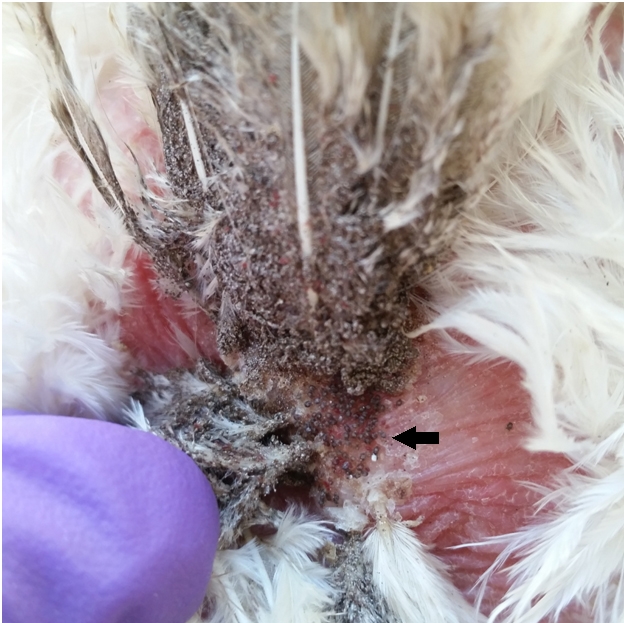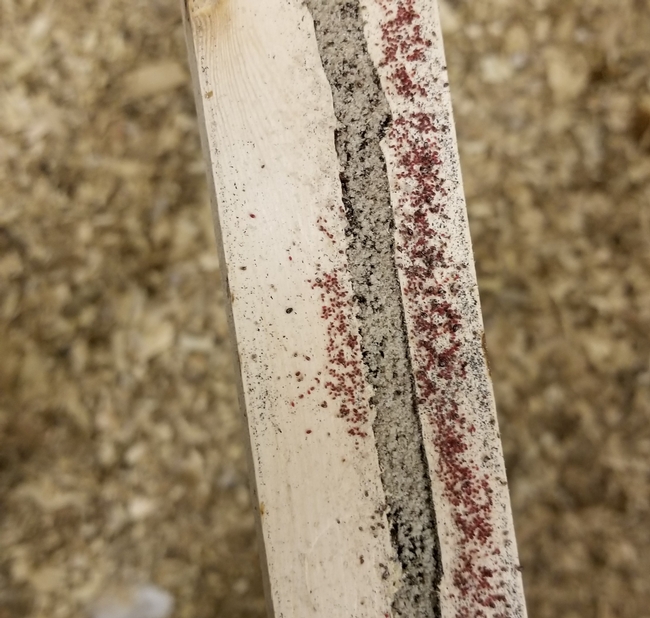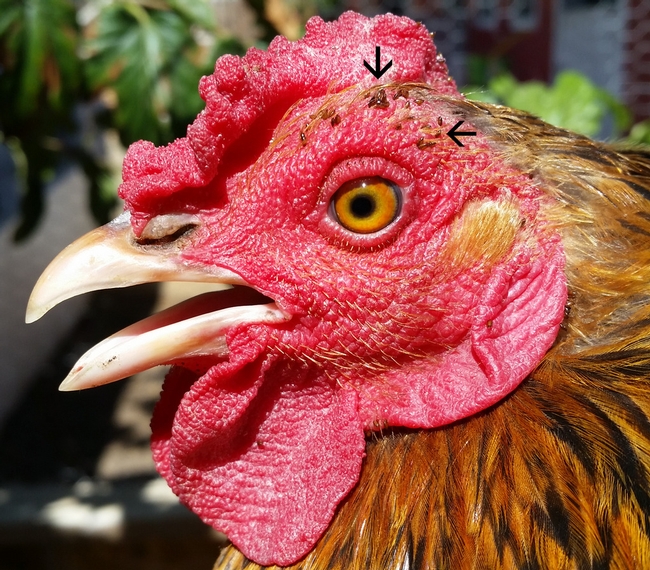Backyard chickens are increasingly being raised as pets, for egg production, and for youth development and science projects. While raising chickens can be an interesting and economically beneficial activity, chickens and other fowl may also have pest problems. Chickens are natural hosts to a variety of arthropod pests (called ectoparasites), including mites, lice, and fleas which feed on chickens and use chicken coops as habitats. These pests may cause discomfort to birds and decrease their egg production. This article aims to help people who keep chickens understand and learn treatment options for the common ectoparasites that can affect their animals.
Lice

Mites
There are two main species of mite found in backyard chicken flocks: the northern fowl mite (NFM; Ornithonyssus sylviarum) and poultry red mite (PRM; Dermanyssus gallinae). Both mite species feed on blood. NFM live on chickens in the fluffy feathers of the vent region (Figure 2a). PRM live off the animal in cracks and crevices near the birds, such as on perches (Figure 2b), in nestboxes, or in coops. Mites can bite people but cannot survive or reproduce on human blood and will not infest human bodies. Learn more about biting mites in homes and other structures here.



Scaly leg mites (Knemidocoptes mutans) may also affect chickens. These mites are microscopic and identification must be confirmed by an expert. However, the signs of a scaly leg mite infestation are obvious and include scabby or crusty legs or feet (Figure 3). Scaly leg mites spread by direct contact between animals, so quarantining infested birds can limit infestations within a flock.
Fleas

Management
Lice, mites, and fleas also parasitize wild birds and rodents and could be introduced to flocks by wild animals or even by contaminated equipment or people. To reduce pests in backyard flocks, focus on good biosecurity, which includes all practices that help to prevent or reduce disease in your flock. New chickens should be quarantined for at least two weeks to avoid introducing parasites (or other diseases) to the flock, washing hands and boots should occur before visiting the flock, and chickens should be separated from other animals. Birds should also be examined for signs of pests regularly to catch infestations early, which are easier to deal with than a large outbreak.
Insects and mites are very susceptible to water loss, so using natural materials that cause desiccation can be highly effective for general control. One such compound is diatomaceous earth (DE). Food-grade DE can be mixed with clean play sand in containers to create dustbathing areas for birds. Dustbathing is a natural behavior chickens perform to keep their feathers clean. The addition of DE helps to suppress pest populations.
Insecticides can be an effective tool for pest control. Farm stores often sell sprays or dusts that can be applied directly to birds or to coops for insect control. It is important to always read and follow the label instructions to avoid poisoning birds, people, or other animals. Pests that live in the environment, such as poultry red mites and sticktight fleas, are trickier to control since they may not be visible on chickens.
References:
Murillo AC, Mullens BA. 2016. Diversity and prevalence of ectoparasites on backyard chicken flocks in California. Journal of Medical Entomology. 53: 707-711. https://www.researchgate.net/publication/290211878_Diversity_and_Prevalence_of_Ectoparasites_on_Backyard_Chicken_Flocks_in_California
Veterinary Entomology website with pest resources for professionals and the public: https://www.veterinaryentomology.org/poultry
For more backyard poultry resources, check out: https://ucanr.edu/sites/poultry/Resources_335/Production/type/backyard/
[Original article published in the Spring 2021 issue of the Retail Newsletter.]